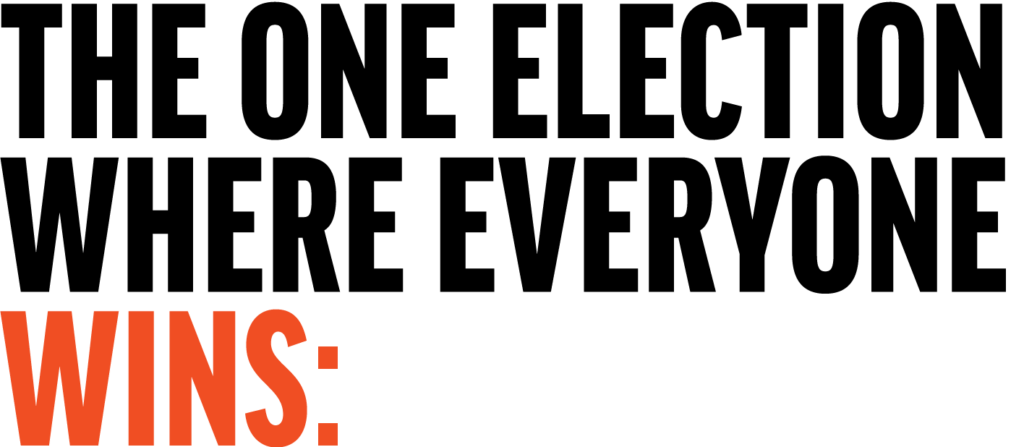
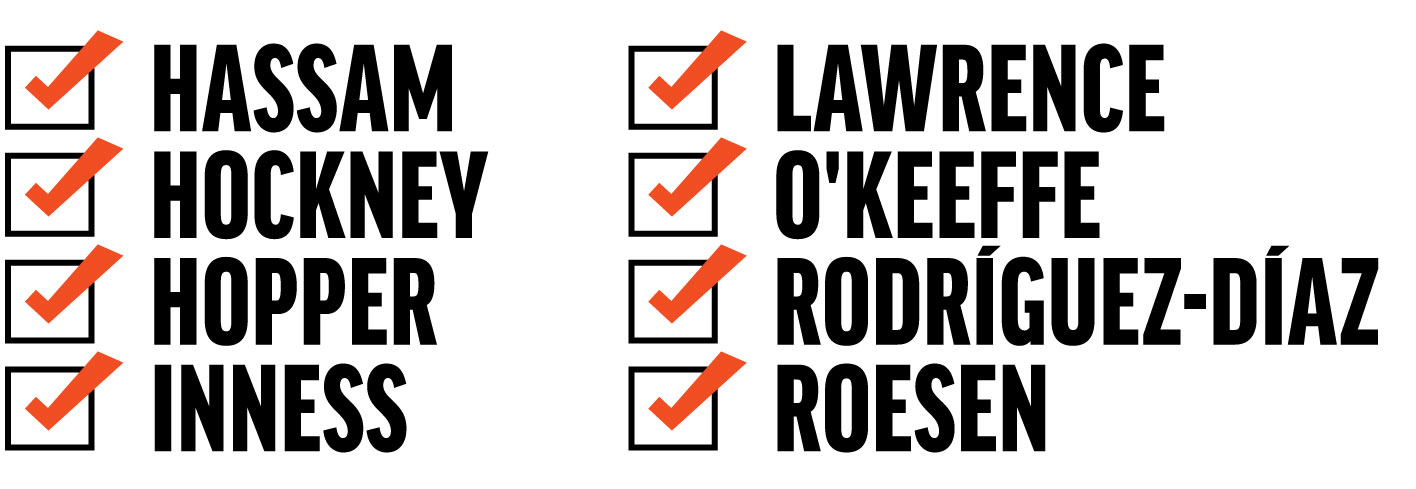
Eight acclaimed nominees from the nation’s preeminent collection of American Art are vying to represent you on the walls of the Nevada Museum of Art. From this group, the three artworks that receive the most votes will “win,” and will be on view in America’s Art, Nevada’s Choice: Community Selections from the Smithsonian American Art Museum, opening November 7, 2019, with a press conference and “big reveal” celebration.
The public is encouraged to vote up to once per day from July 11 through August 11, 2019. To vote, an email address and zip code are required.
By providing the Nevada Museum of Art your email, you are agreeing to receive occasional news updates from the Museum. Participant information will not be sold, traded, or given to any third party for marketing or other purposes.
Time remaining to vote:

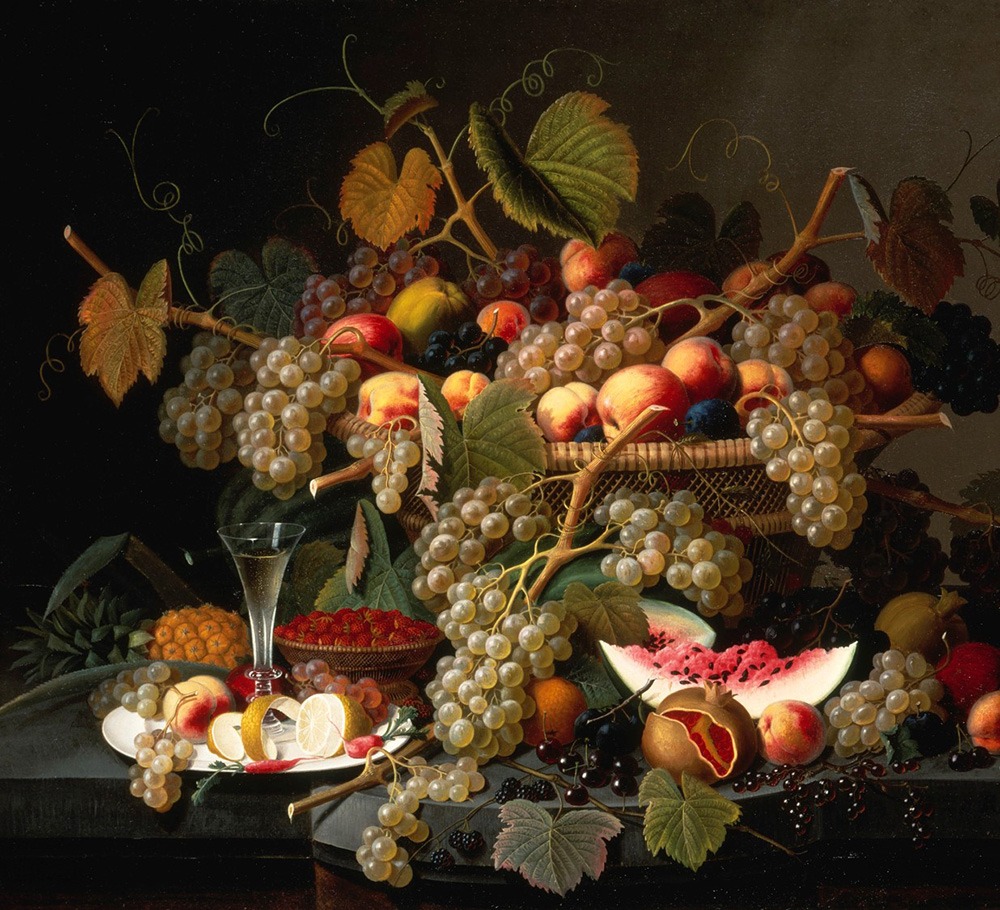
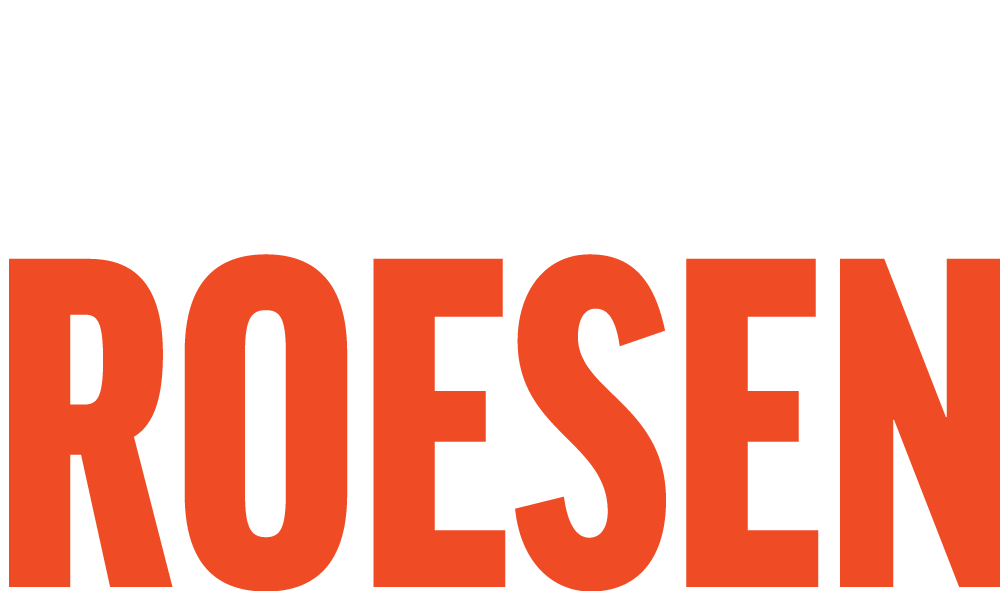
Rendered in delicious detail by the acclaimed German-American artist, Severin Roesen (1816-1872), these fruits of creative labor might be said to reflect the promise of America itself. Purchased by a mid-1900s American merchant, the painting’s overflowing basket of grapes, apples, strawberries, and berries could easily have been seen as an expression of his family’s growing prosperity, with the seeds of the half-eaten melon and split pomegranate representing hope for future success and abundance.
Severin Roesen, Still Life with Fruit, 1852, oil on canvas, Smithsonian American Art Museum, Gift of Maria Alice Murphy in memory of her brother Colonel Edward J. Murphy, Jr. and museum purchase through the Director’s Discretionary Fund, 1981.114
The voting period has ended.
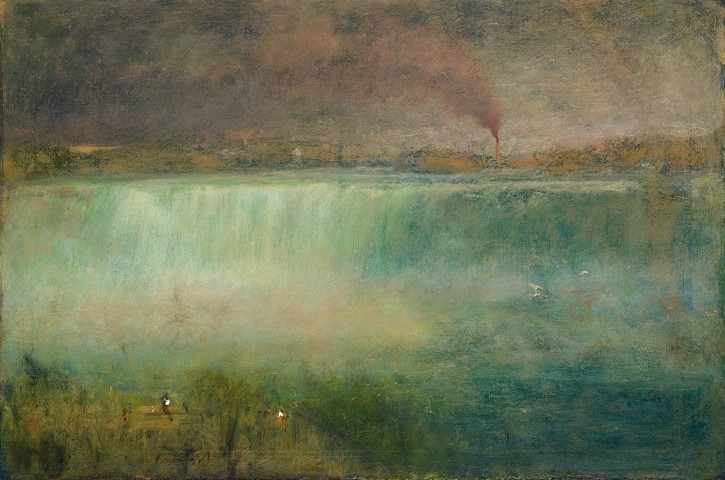
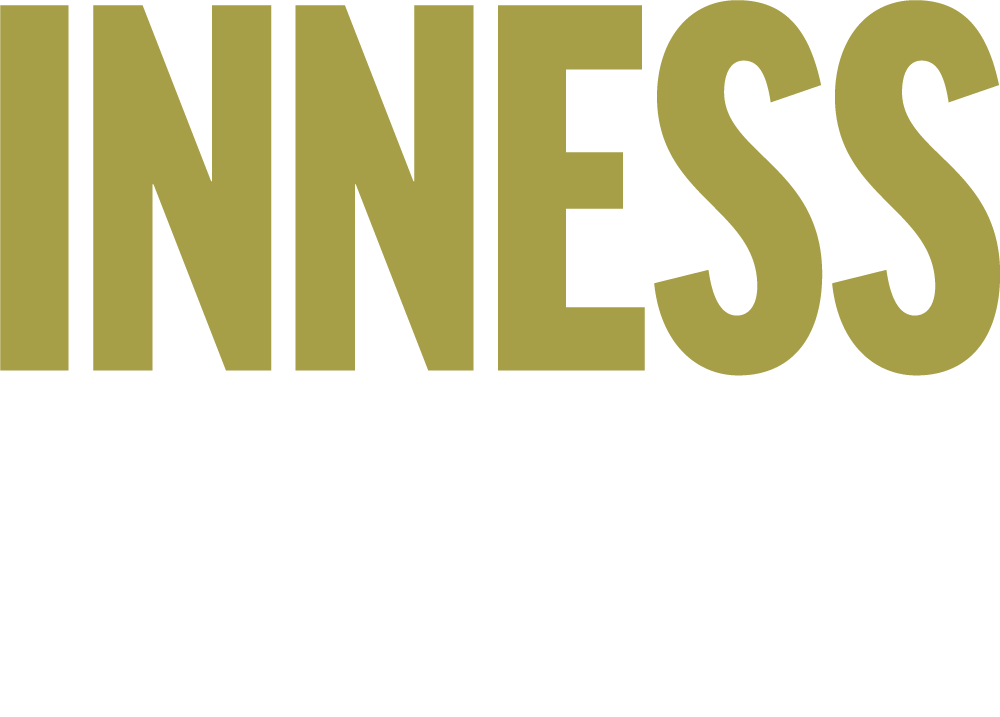
Welcome to American awe. We’re at Niagara Falls in New York, one of the nation’s most iconic and cherished settings. Like many early American landscape painters, George Inness (1825-1894) used visible brushstrokes and moody colors to convey the dramatic movement of water over the falls and the light that accompanies it. Just before the turn of the century, when Innes painted this scene, factories still existed nearby as evidenced by the industrial smokestack shown in the background. In later years, the falls would be designated a state park, prompting city planners to remove the industrial structures and restore the area to the pristine and untouched image we know today.
George Inness, Niagara, 1889, oil on canvas, Smithsonian American Art Museum, Gift of William T. Evans, 1909.7.31
The voting period has ended.
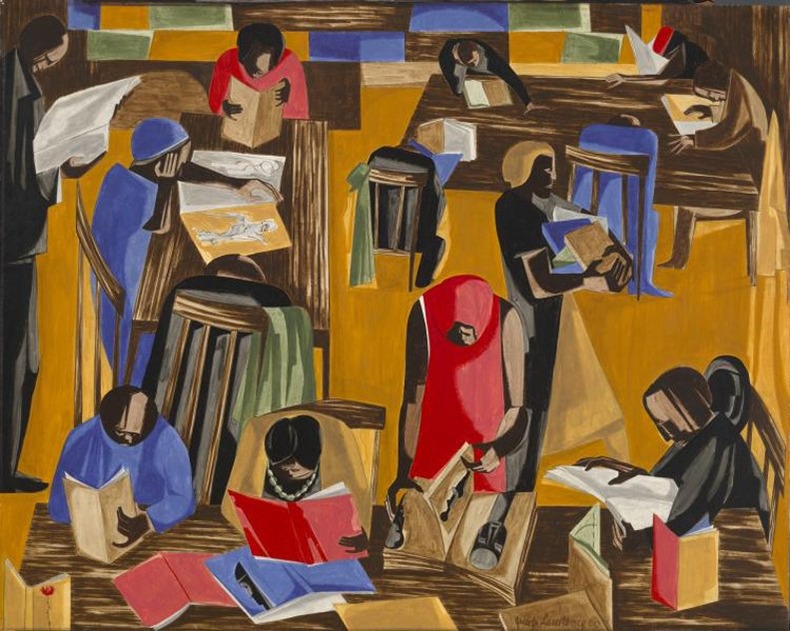
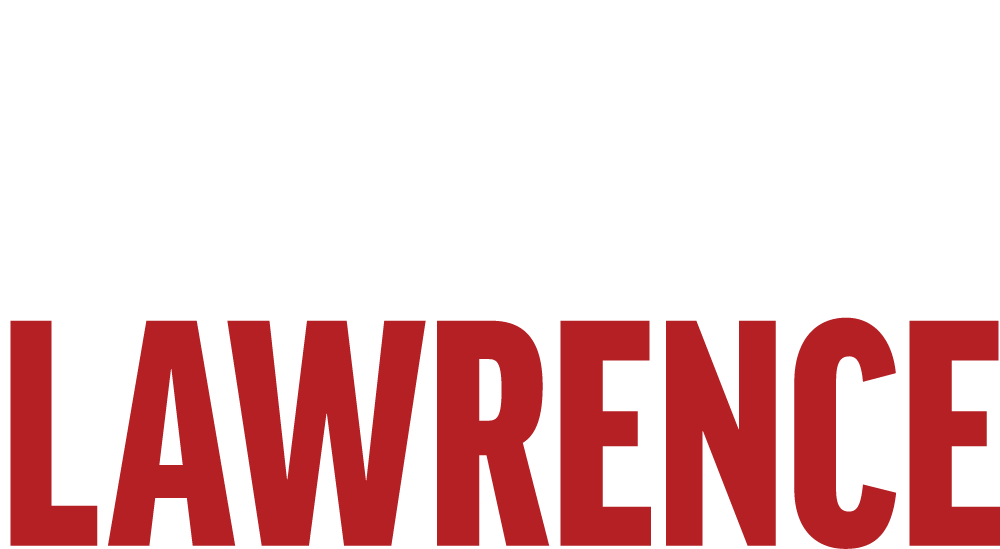
Shhhh! Jacob Lawrence (1917-2000), the celebrated African-American artist, has taken us to the library. Lawrence once remarked, in recalling his high school years, that black culture was “never studied seriously like regular subjects.” Taking his education into his own hands, Lawrence frequented the libraries and museums of his Harlem neighborhood of New York City. Portraying what is most likely the 135th Street Library, home to the country’s first significant public collection of African-American literature, history, and art prints, this vivid reading room scene suggests cultural discovery and the embrace of one’s roots. Who knows, the man standing in red might even be Lawrence himself.
Jacob Lawrence, The Library, 1960, tempera on fiberboard, Smithsonian American Art Museum, Gift of S.C. Johnson & Son, Inc., 1969.47.24
The voting period has ended.
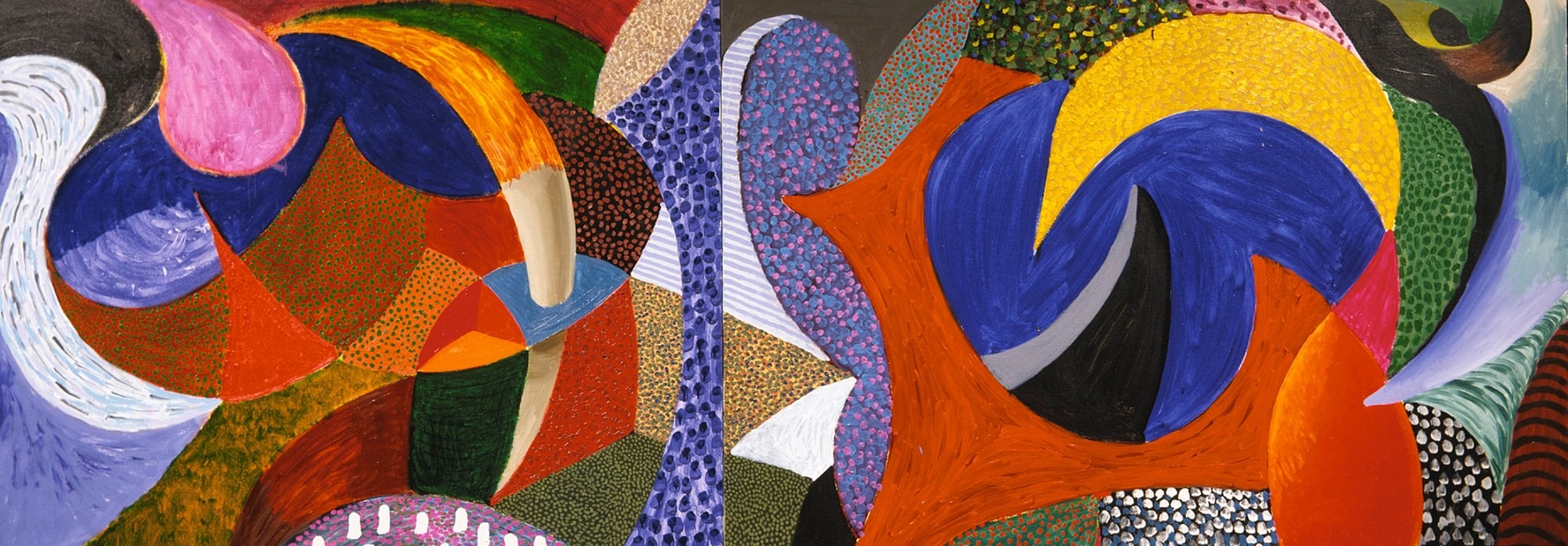

The windows are rolled down, and the radio’s turned up, we’re driving the California coast with pop-art icon, David Hockney. Inspired by the winding roads bordering the Pacific Ocean and the Cubist style of Picasso, this stunning, 14-foot canvas embodies, through its rhythmic twists, turns, colors, and patterns, Hockney’s view that, “It’s impossible to take everything in at a time. Our perception is composed of thousands of shifting images which our mind synthesizes into a whole.” Enjoy the ride!
David Hockney, Double Entrance, 1993-1995, oil on canvas, Smithsonian American Art Museum, © 1993/95, David Hockney, Museum purchase through the Luisita L. and Franz H. Denghausen Endowment, 1997.2A-B
The voting period has ended.
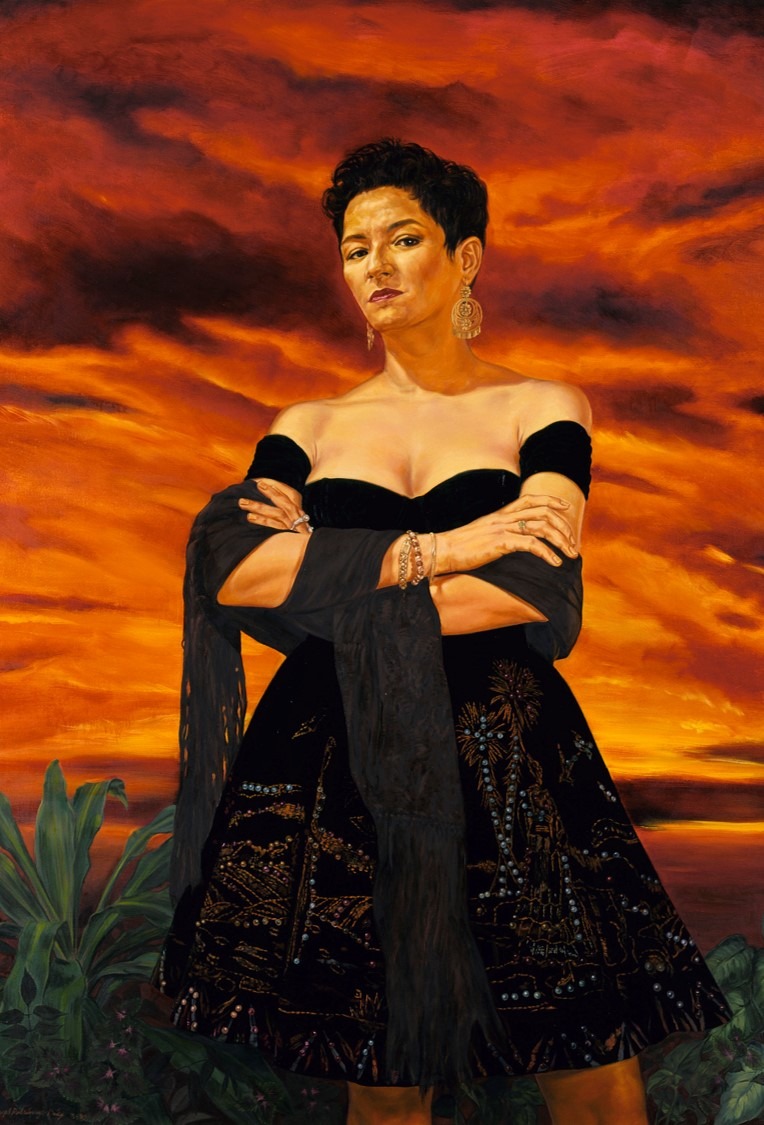
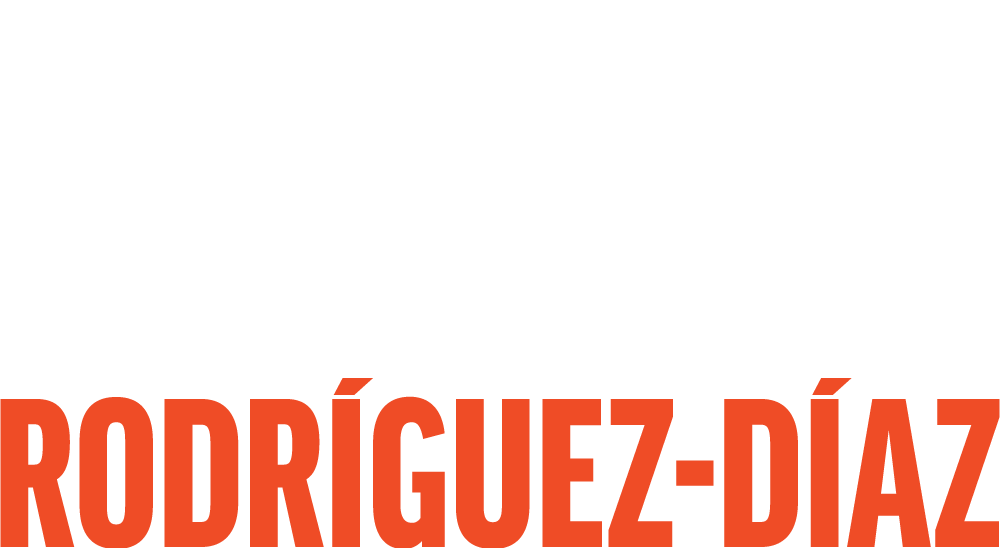
Meet the celebrated Chicana author and poet, Sandra Cisneros dramatically depicted in a defiantly modern pose against a fiery sunset while wearing a dress of traditional Mexican embroidery and sequins with a rebozo (shawl) draped about her arms. As she wrote in her prize-winning novel The House on Mango Street, she is “nobody’s mother, and nobody’s wife,” declaring that she has never been afraid to chart her own path. She is indeed the brazen heroine of her narrative that knows no end.
Angel Rodríguez-Díaz, The Protagonist of an Endless Story, 1993, oil on canvas, Smithsonian American Art Museum, © 1993, Angel Rodriguez-Diaz, Museum purchase made possible in part by the Smithsonian Latino Initiatives Pool and the Smithsonian Institution Collections Acquisition Program, 1996.19
The voting period has ended.
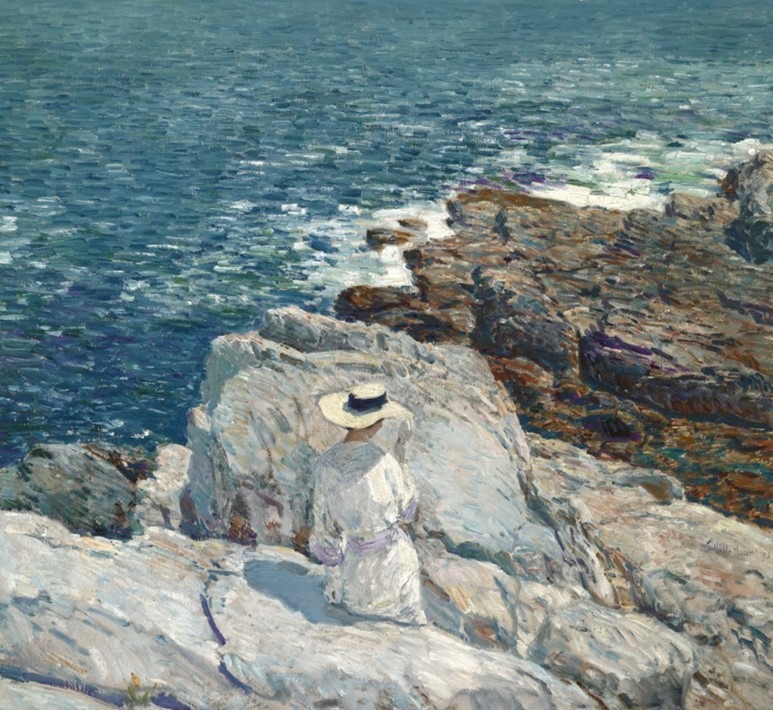
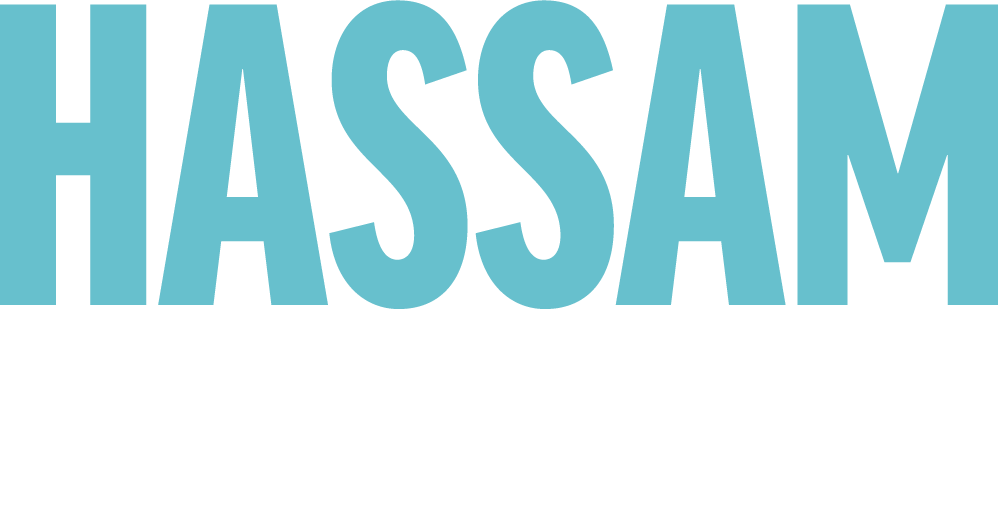
A summer’s day, an elegantly dressed woman perched upon a rocky cliff overlooking the sea. Gently she tilts her hat to keep the sun and breeze from her face, a daub of white suggesting a sailboat in the distance. Employing flickering brushstrokes and brilliant colors, renowned American Impressionist painter, Childe Hassam (1859-1935) beautifully captured this dappled sunlit moment on the coast of Maine, the place he traveled to each summer to reside with other artists and poets in what would become known as the Old Lyme Artist Colony.
Childe Hassam, The South Ledges, Appledore, 1913, oil on canvas, Smithsonian American Art Museum, Gift of John Gellatly, 1929.6.62
The voting period has ended.
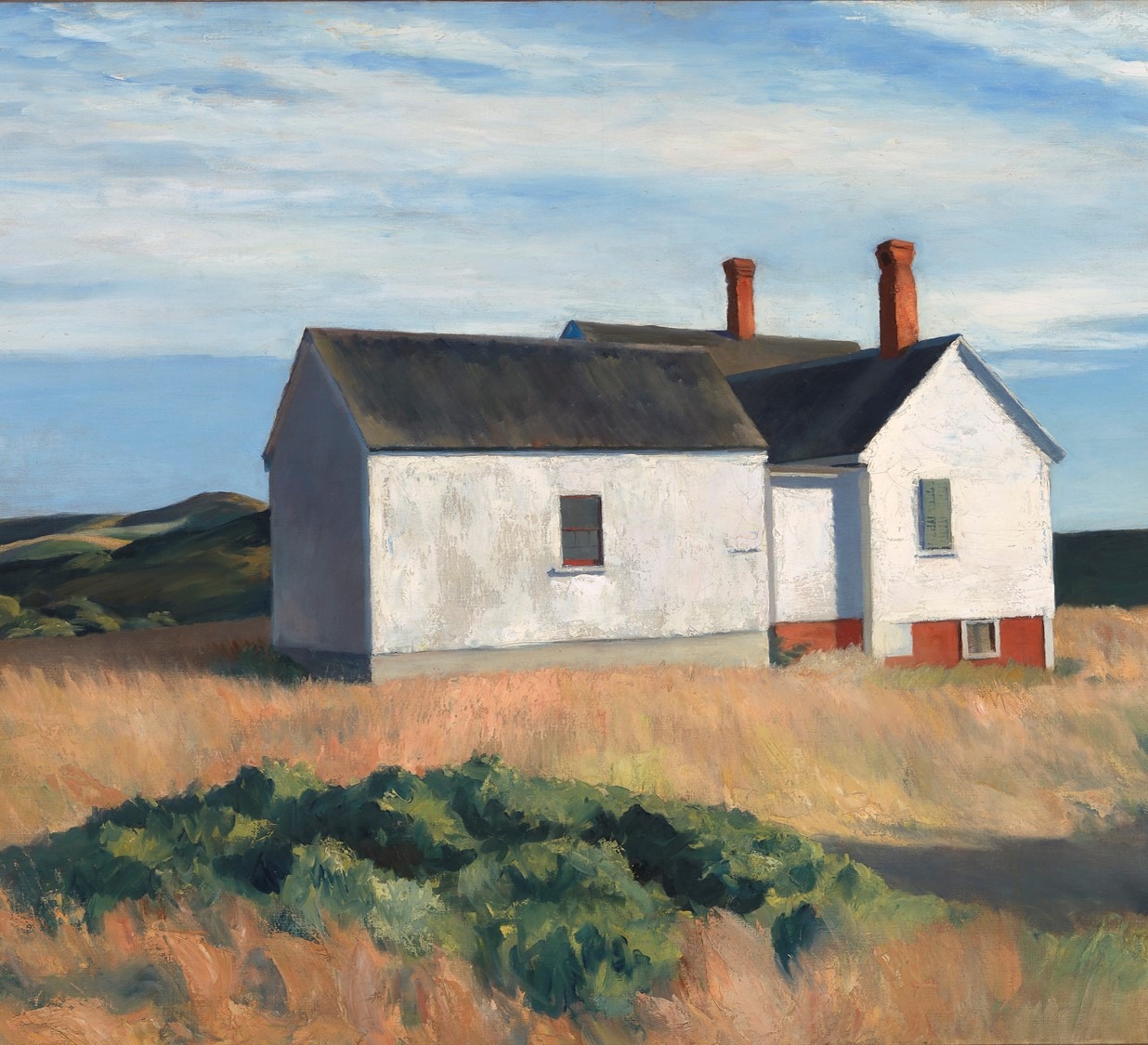

Oh, what a day for a walk. We’re exploring the coast of Cape Cod, Massachusetts with none other than Edward Hopper (1882-1967). And look, over there, a modest yet tidy house said to be the residence of a longtime family of fishermen. Hopper, known for his realist paintings of modern American life, rented a summer cottage not far from this blocky, clapboard dwelling situated on a bluff overlooking the Atlantic. Its distinct white walls are a stark contrast to Hopper’s loosely painted grass, hills, and cloudy blue sky that offer a feeling of both serenity and quiet isolation.
Edward Hopper, Ryder’s House, 1933, oil on canvas, Smithsonian American Art Museum, Bequest of Henry Ward Ranger through the National Academy of Design, 1981.76
The voting period has ended.
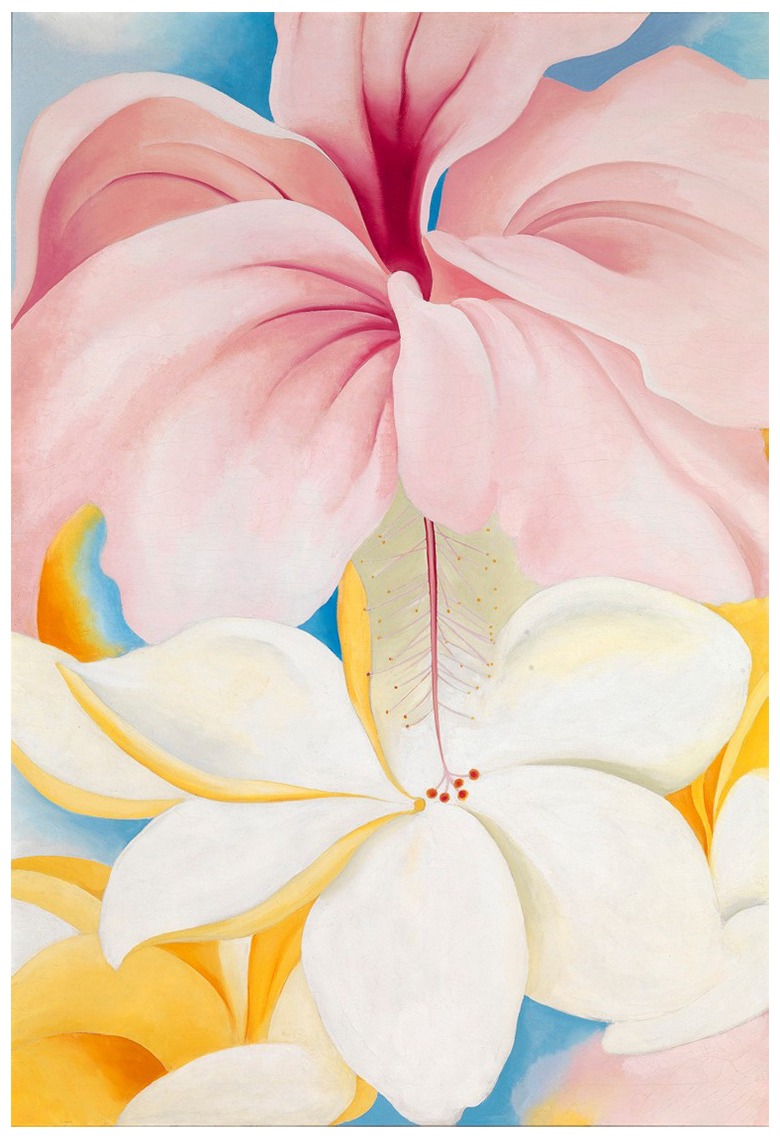
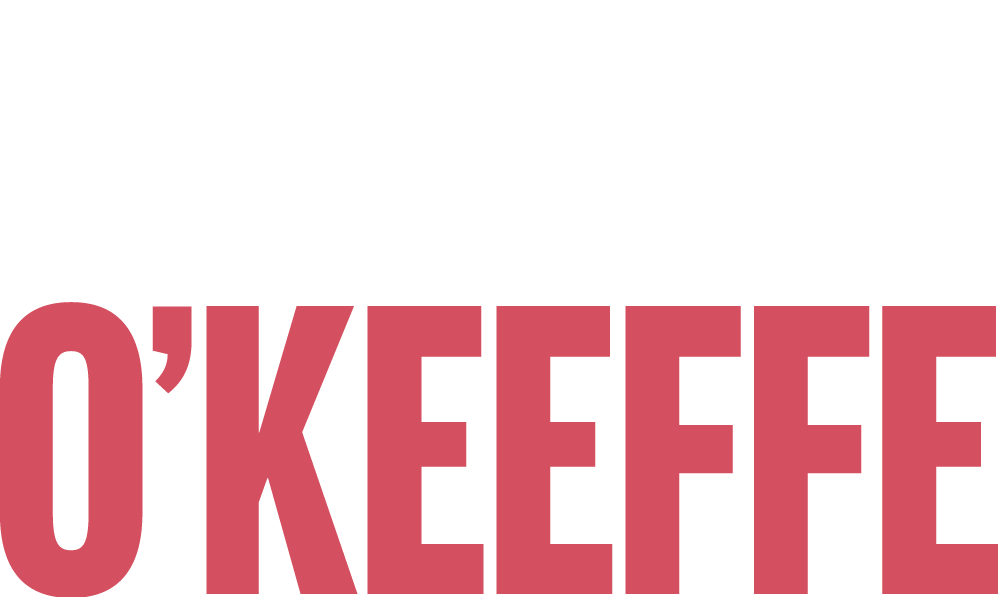
“Funny, it doesn’t look like a pineapple.” Those may not have been the precise words used by executives of the Dole Pineapple Company who hired Georgia O’Keeffe (1887-1986) to create paintings for their advertising campaign, only to learn she hadn’t painted a single pineapple during her time in Hawaii. O’Keeffe chose instead to create works such as this up-close view of hibiscus and plumeria flowers set against a pure blue sky. The painting that transformed a simple blossom into something far more dramatic. It was with reluctance that she finally fulfilled her commission after Dole was forced to fly a pineapple to her New York studio.
Georgia O’Keeffe, Hibiscus with Plumeria, 1939, oil on canvas, Smithsonian American Art Museum, Gift of Sam Rose and Julie Walters, 2004.30.6
The voting period has ended.
America’s Art, Nevada’s Choice:
Community Selections from the Smithsonian American Art Museum
Opening November 7, 2019
The Nevada Museum of Art has been selected to participate in a five-year exhibition partnership with the Smithsonian American Art Museum (SAAM) made possible by Art Bridges and the Terra Foundation for American Art. The local kickoff to this multi-year, multi-institutional partnership starts with a community-wide campaign, “Vote Nevada Art.” During this month-long vote (July 11 – August 11, 2019) the public will decide which artworks will come to the Museum for a year-long exhibition opening this fall.
SAAM is making a group of eight paintings available for this exhibition, including works by Childe Hassam, David Hockney, Edward Hopper, George Inness, Jacob Lawrence, Georgia O’Keeffe, Angel Rodríguez-Díaz, and Severin Roesen. From this group, the three artworks that receive the most votes will “win,” and will be on view in America’s Art, Nevada’s Choice: Community Selections from the Smithsonian American Art Museum, opening November 7, 2019, with a press conference and “big reveal” celebration. To learn more about this five-year collaboration with SAAM and four partner museums across the American West read the press release.

This is one in a series of American art exhibitions created through a multi-year, multi-institutional partnership formed by the Smithsonian American Art Museum as part of the Art Bridges + Terra Foundation Initiative.

America’s Art, Nevada’s Choice at the Nevada Museum of Art is exclusively sponsored by the Art Bridges + Terra Foundation Initiative and the E. L. Wiegand Foundation.
Grassroots Campaign | Lawn Sign Pick-up
To support the online voting campaign, printed campaign lawn signs are available to people for FREE. Community participants can pick up campaign signs beginning at 5 pm, July 11, at the front desk of the Nevada Museum of Art in downtown Reno. To pick-up signs in Las Vegas, please email carmen.beals@nevadaart.org.
Show us your lawn signs and community pride: #VoteNevadaArt